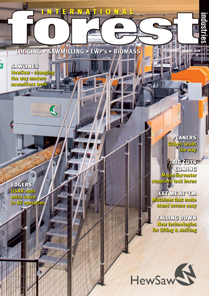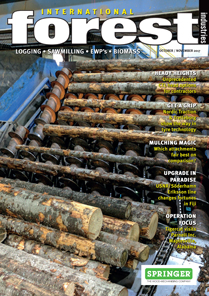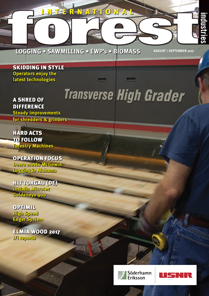EDITOR’S COMMENT ISSUE 62 APR/MAY 2018
Forestry in the new world
The forestry sector is on the cusp of a major technology advancement but who will make the breakthrough?
A conversation ‘around the water cooler’ the other day quite interestingly turned to the rapid rate of change in technologies available to industry, in which my exceptionally tech-savvy colleague, let’s call him David, referred to this technological change as the Fourth Industrial Revolution.
I didn’t want to flag myself up as an ignoramus so continued to nod along but I couldn’t help wondering: What is the Fourth Industrial Revolution and why was I not told there had been so many?
So, I did some research and, for those out there to whom the genesis of industry has also been a mystery, I’d like to briefly relate the industrial revolutions as I now understand them.
The first industrial revolution was, simply, The Industrial Revolution’, which started early in the second half of the 18th century and lasted about 70 years. It brought us the cotton gin and steam engines, along with a huge uptick in child labour and the slave trade.
The Second Industrial Revolution – always the bridesmaid in revolution-centric conversation – began about 90 years after the first one started (or just 30 years after it ended) and delivered mass manufacturing. This started with steel then moved into other sectors; the automobile assembly line remains iconic of this period.
Digitisation was the Third Industrial Revolution, which forced its way through only a decade into the current millennium and looks at more sophisticated software, advancements in robotics, and mind-bending internet technologies.
If we’re honest with ourselves, we are yet to get our heads around the changes hoisted upon us by the Third Industrial Revolution but that hasn’t stopped the boffins from already embarking on the Fourth Industrial Revolution.
The person to most-famously call out this latest industrial facelift is Professor Klaus Schwab, who founded and runs the World Economic Forum and placed the Fourth Industrial Revolution at the heart of the 2016 WEF annual meeting. The trademarks of this advancement are mobile supercomputing, artificial intelligence, and scary biological modifications of the genetics and brains.
This change, Schwab says, is happening at an exponential rate, which is the point that got me thinking.
While the first industrial revolution began some 1,350 years after the Iron Age ended and modern human history (as opposed to protohistory) was born, there was less than a hundred years between its onset and that of the second revolution – then roughly the same again before the third. The period between the third and fourth was less than five years.
In contrast, many would suggest the forestry sector has failed to make a industry-shaping technological breakthrough since mechanisation of harvesting took hold some 40 years ago, with the scanning and digitisation of wood processing perhaps an exception.
This suggests the industry is on the precipice of a major change. And this change has the potential to divide the industry.
My technically sophisticated colleague, David, explained this by pointing to another colleague of ours – a bald gent, we’ll call Phil, who sits in the corner and still uses his phone primarily for making phone calls.
“You see, Phil pretends to be contemporary,” David began. “He has a smart-phone, he tweets and has all but abandoned paper currency.
“However, his phone is a Blackberry, his tweets are always 24 hours after the fact and he’s scared of internet banking.”
His point, as far as I could tell, was that technology was presenting industry with tools unimaginable even a decade ago. To truly take advantage and move forward, we must fully embrace this change, rather pay it lip service to appear relevant.
As this moment of seismic change approaches, companies will determine for themselves if they going to be Davids or Phils.
Enjoy
Chris Cann





